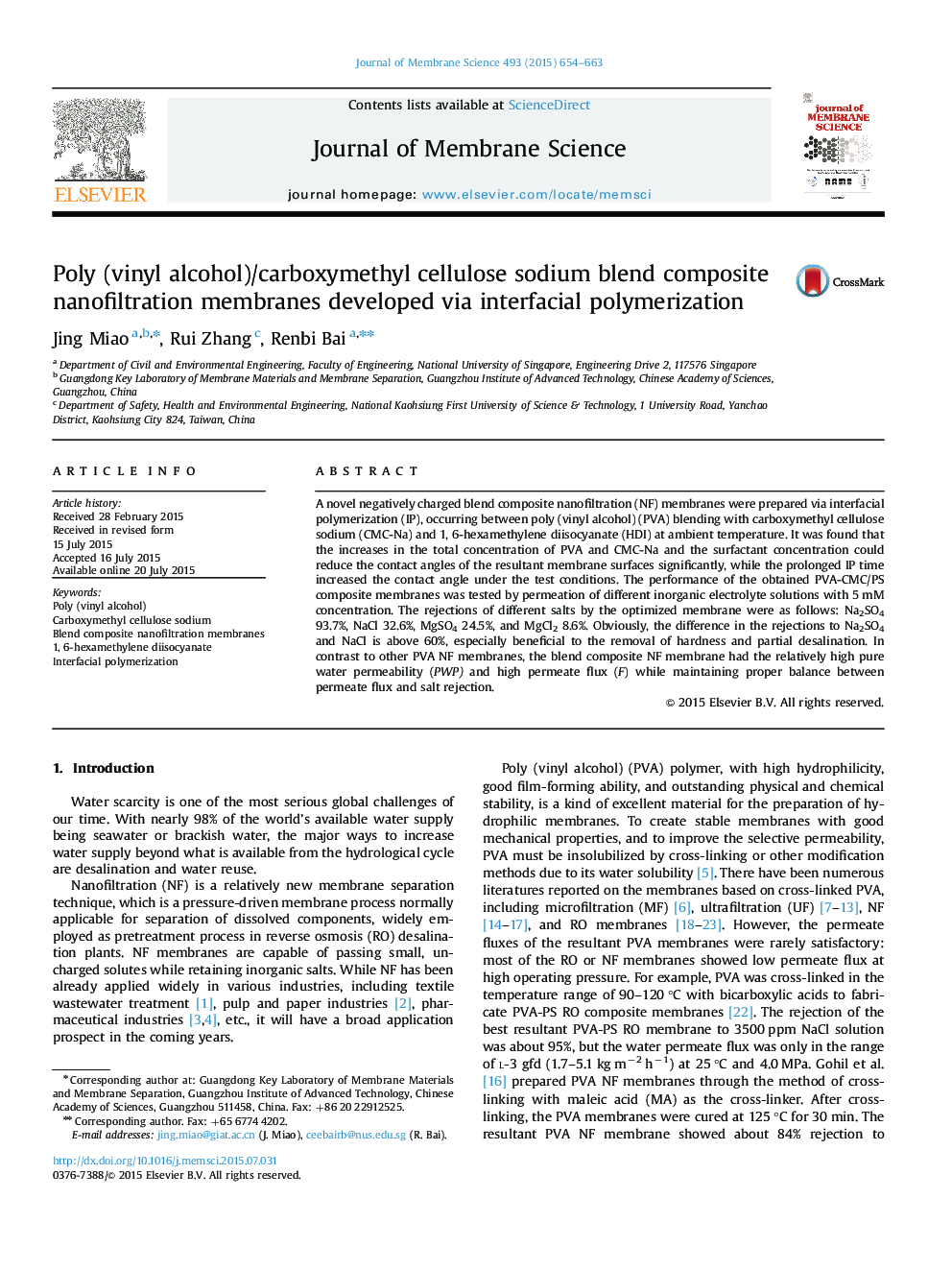| Article ID | Journal | Published Year | Pages | File Type |
|---|---|---|---|---|
| 7021200 | Journal of Membrane Science | 2015 | 10 Pages |
Abstract
A novel negatively charged blend composite nanofiltration (NF) membranes were prepared via interfacial polymerization (IP), occurring between poly (vinyl alcohol) (PVA) blending with carboxymethyl cellulose sodium (CMC-Na) and 1, 6-hexamethylene diisocyanate (HDI) at ambient temperature. It was found that the increases in the total concentration of PVA and CMC-Na and the surfactant concentration could reduce the contact angles of the resultant membrane surfaces significantly, while the prolonged IP time increased the contact angle under the test conditions. The performance of the obtained PVA-CMC/PS composite membranes was tested by permeation of different inorganic electrolyte solutions with 5Â mM concentration. The rejections of different salts by the optimized membrane were as follows: Na2SO4 93.7%, NaCl 32.6%, MgSO4 24.5%, and MgCl2 8.6%. Obviously, the difference in the rejections to Na2SO4 and NaCl is above 60%, especially beneficial to the removal of hardness and partial desalination. In contrast to other PVA NF membranes, the blend composite NF membrane had the relatively high pure water permeability (PWP) and high permeate flux (F) while maintaining proper balance between permeate flux and salt rejection.
Related Topics
Physical Sciences and Engineering
Chemical Engineering
Filtration and Separation
Authors
Jing Miao, Rui Zhang, Renbi Bai,
